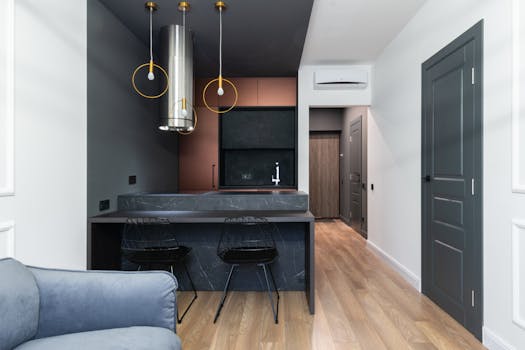
Introduction

Choosing the perfect color palette for your home is essential for creating a harmonious living space. The right colors can influence your mood, enhance the aesthetic appeal of your home, and even affect the perceived size of a room. In this article, we will explore various factors to consider when selecting a color palette, along with tips and tricks to make the process easier.
Understanding Color Theory

Before diving into color selection, it’s important to have a basic understanding of color theory. Colors are categorized into three primary groups: primary, secondary, and tertiary colors. Primary colors, such as red, blue, and yellow, cannot be created by mixing other colors. Secondary colors are formed by mixing primary colors, while tertiary colors result from mixing a primary color with a secondary one.
Colors can also be classified as warm (reds, oranges, yellows) or cool (blues, greens, purples). Warm colors tend to evoke feelings of warmth and energy, while cool colors can create a calming atmosphere. Additionally, neutral colors, such as whites, grays, and beiges, serve as a perfect backdrop for accent colors and can help in balancing out vibrant hues.
Factors to Consider When Choosing a Color Palette

When selecting a color palette for your home, consider the following factors:
1. Room Function
The purpose of each room plays a crucial role in determining the color palette. For example, soothing colors like soft blues and greens are ideal for bedrooms and bathrooms, while vibrant colors can energize spaces like kitchens and playrooms.
2. Lighting
Natural and artificial lighting can significantly alter how colors appear. It’s essential to test paint samples in different lighting conditions to see how they change throughout the day. Always observe colors in natural light and in the evening when artificial lighting is used.
3. Existing Furniture and Decor
Consider the colors of your existing furniture, artwork, and decor when creating a color palette. Choose shades that complement or contrast these elements to create a cohesive look.
Creating a Color Palette

Now that you understand the basics, let’s discuss how to create your color palette. Follow these steps:
1. Start with a Base Color
Choose a base color that resonates with you. This could be a color you love or one that evokes the desired mood for the space.
2. Add Accent Colors
Once you have your base color, select one or two accent colors. These can be bolder shades that add depth and interest to the room.
3. Incorporate Neutrals
Finally, incorporate neutral shades to balance your palette. Neutrals can act as a backdrop, allowing your accent colors to stand out.
Tips for Choosing the Right Colors

Here are some additional tips to help you finalize your color choices:
1. Use Color Swatches
Always use color swatches when selecting paint colors. This will allow you to see how the color looks on your walls and how it interacts with your space.
2. Consider Trends
While it’s important to choose colors you love, consider current trends in home decor. Popular colors can inspire your palette and give your home a modern touch.
3. Test Before Committing
Before painting an entire room, test your chosen colors on a small area of the wall to ensure they look as expected.
Conclusion

Choosing the perfect color palette for your home can enhance your living environment and reflect your personal style. By understanding color theory, considering room function, lighting, and existing decor, you can create a beautiful and cohesive color scheme. Remember to test your colors and enjoy the process of transforming your space.






